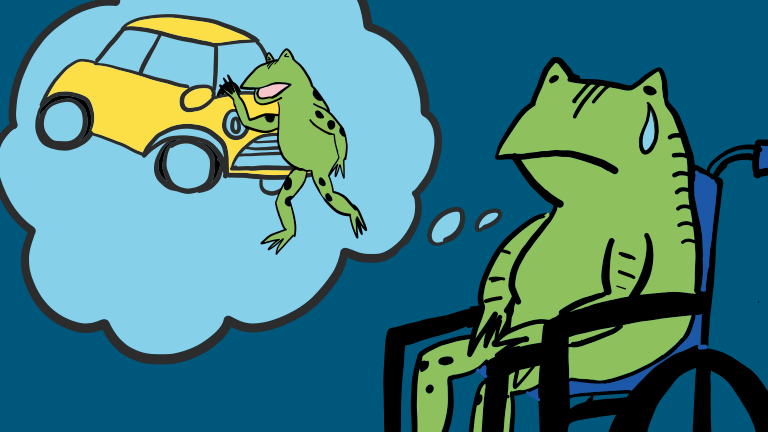
In traffic accident cases in Japan, a responsible party has to compensate for all the victim’s losses. Besides, in the following circumstances, the responsible party also has a legal duty for paying consolation money for the victim’s pain and suffering.
(1) A victim was dead
(2) A victim is injured
(3) A victim was left with residual disability
The consolation money is part of the compensation but different from the compensation for the victim's actual losses. The consolation money doesn't make up for the victim’s actual damages like medical expenses, lost wages, and damaged properties, but it is for invisible mental burdens like pain and suffering.
About the consolation money for the case of above (1) and (2), you can refer to the following articles: Consolation money for an injured victim and Consolation money for a dead victim.
In this article, we take a closer look at the consolation money for a victim left with residual disability in a traffic accident.
Grade of Residual disability
The amount of consolation money depends on which grade of residual disability you will be entitled by GIROJ.
The grade is the most critical for confirming the total amount of money you eventually get as a traffic accident victim. Not only consolation money but also the total amount of compensation also depends on the grade.
For example, CALI's compensation for residual disability depends on the grade (See the table showing the grade and the amount of compensation.) The at-fault party’s insurance company decides the total amount of compensation also according to the grade. If the victim files a suit against the responsible party, the court decides the total amount of compensation also according to your grade. (About how to apply for the entitlement of residual disability, please see this article.)
How to calculate the amount of consolation money
There are three standards for calculating the consolation money of residual disability: Court standard, CALI’s standard, and voluntary insurance company’s standard.
The Court standard is based on past precedents. So, it shows the amount which will probably be admitted by the court if you file a suit against the other party. Since it shows the highest amount among all of the standards and it is legally supported, it’s wise to start the settlement negotiation with the amount calculated by Court standard. The at-fault party might suggest the amount based on the lower standard, for example, voluntary insurance company’s standard. If you are a car accident victim and cannot compromise their suggested amount, file a suit against them. The court will support the amount if it is calculated based on the court standard.
CALI's standard shows the amount CALI secures when you have residual disability. And Voluntary Insurance Company's standard shows the amount they use as standard. You can see the average amount of each standard, according to the grade in the following table.
(Unit: JPY1,000,000)
| Grade | Court standard | Voluntary Insurance Company's standard | CALI's standard |
| 1 | 2600-3000 | 1300 | 1100 |
| 2 | 2200-2600 | 1120 | 958 |
| 3 | 1800-2200 | 950 | 829 |
| 4 | 1500-1800 | 800 | 712 |
| 5 | 1300-1500 | 700 | 599 |
| 6 | 1100-1300 | 600 | 498 |
| 7 | 900~1100 | 500 | 409 |
| 8 | 750~870 | 400 | 324 |
| 9 | 600~700 | 300 | 245 |
| 10 | 480~570 | 200 | 187 |
| 11 | 360~430 | 150 | 135 |
| 12 | 250~300 | 100 | 93 |
| 13 | 160~190 | 60 | 57 |
| 14 | 90~120 | 40 | 32 |
The amount of consolation money shown by the table is only for pain and suffering the residual disability causes. If you are left with residual disability, you also have a right to receive consolation money for commuting hospitals and hospitalization. See the following article as well: Consolation money for an injured victim.
Note that consolation money is just a part of compensation. Car accident victims also have the right to receive compensation for their actual losses. Please also see What compensation can I get after traffic accident?